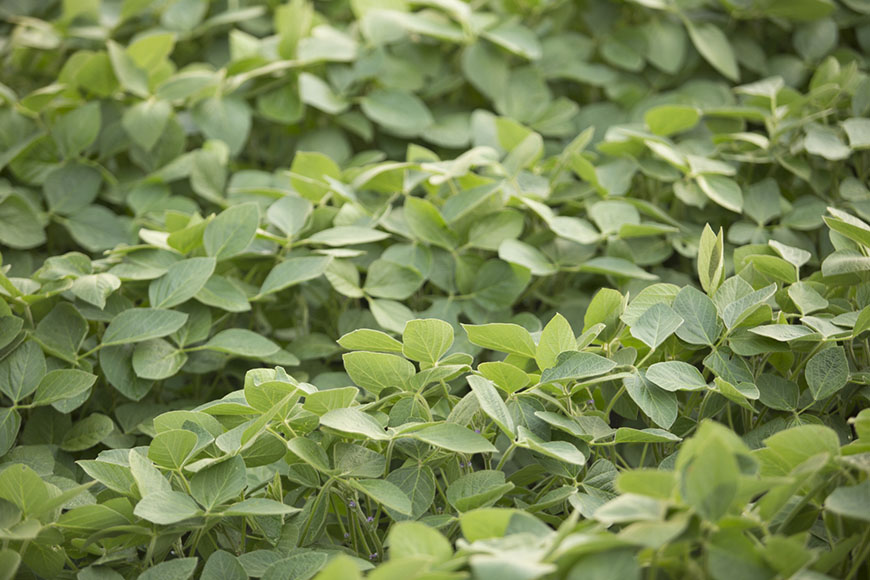Battling Pests in 2016

Heavy rainfall during the 2015 growing season minimized insect problems in cornfields across the Midwest. However, in many instances, that rainfall perpetuated diseases such as gray leaf spot and northern corn leaf blight (NCLB).
Several WinField agronomists discussed the most prevalent insects and diseases for corn from the past year in the Corn + Soybean Digest article “2016 Corn Outlook: Diseases and Insects.”
Insect and disease highlights from each state included:
With regard to diseases, farmers should watch for gray leaf spot and NCLB, as inoculum from 2015 may add pressure in 2016. Farmers that saw foliar diseases last year should select hybrids to help resist those specific diseases.
For more information about corn insects and diseases from 2015, view the complete article on Corn & Soybean Digest.
Several WinField agronomists discussed the most prevalent insects and diseases for corn from the past year in the Corn + Soybean Digest article “2016 Corn Outlook: Diseases and Insects.”
Insect and disease highlights from each state included:
- Ohio
- Agronomist John Smith noted that the wet weather provided an ample environment for diseases like NCLB and gray leaf spot. However, farmers who made a fungicide application at the VT growth stage saw a largely positive response – some as much as 20 bushels an acre, according to Smith.
- Illinois
- Illinois growers saw two new corn diseases in 2015: tar spot, a fungal disease that looks like flecked bits of tar on corn leaves; and bacterial stripe, a viral disease that resembles Goss’s wilt and Stewart’s wilt. While fungal diseases can be managed through fungicide use, little is known about the benefit of using fungicide on tar spot, says agronomist Bob Beck.
- Wet conditions during the season also resulted in crazy top, which impacted late-planted fields. Root and crown rot were also present, particularly in poorly drained fields. “Some corn fields were nearly drowned out,” says Beck.
- Japanese beetles occasionally appeared around tasseling, causing some damage. Adult corn rootworms appeared late in the season and fed on silks, but that didn’t affect pollination.
- Iowa
- Agronomist Ryan Wolf assessed that disease pressure was higher than insect pressure in 2015. Disease pressure primarily came from NCLB, gray leaf spot and Goss’s wilt. According to Wolf, hybrid selection is important in managing Goss’s wilt, while fungicide application at tasseling is more critical for NCLB.
- Wisconsin
- Wisconsin experienced higher disease pressure from NCLB and anthracnose, according to Kevin Sloane, eastern regional technical seed manager. “While northern corn leaf blight shows up every year, pressure was higher than normal last year,” Sloane says.
- Corn borer and corn rootworm beetles were the top insect challenges for 2015. Aboveground, corn borer problems caused stalk lodging and ear drop, while corn rootworm beetles continued to be a problem in Wisconsin, particularly in corn-on-corn fields.
- Minnesota
- NCLB presented the biggest threat in 2015. In this case, the disease appeared late after tasseling, and after farmers typically make fungicide applications. According to agronomist Jon Zuk, farmers that didn’t make applications at V5 or VT “likely suffered serious loss.”
- Corn rootworm was hands down the number one corn insect pest in 2015, although corn leaf aphids were also present.
- South Dakota
- Goss’s wilt was the primary disease in this state, according to Wolf. NCLB also appeared in more sensitive hybrids, however, fungicide applications at tasseling provided a good ROI.
- Farmers are planting more conventional and glyphosate-tolerant hybrids in South Dakota, says Wolf. He says he saw more corn borer pressure than in the last four or five years, which is primarily due to the traits farmers are using.
- Indiana
- Indiana experienced pressure from stinkbugs, which feed on seedling corn, and many farmers combatted this challenge with pre-emergence applications of insecticides. Agronomist George Watters expects that stinkbugs will be a growing problem in years to come.
- “We had several foliar diseases come in: gray leaf spot, northern corn leaf blight and rust, which then became potential yield threats in many fields. By understanding a hybrid’s response to fungicide, many farmers were able to treat their most responsive hybrids appropriately to gain benefits,” says Watters.
With regard to diseases, farmers should watch for gray leaf spot and NCLB, as inoculum from 2015 may add pressure in 2016. Farmers that saw foliar diseases last year should select hybrids to help resist those specific diseases.
For more information about corn insects and diseases from 2015, view the complete article on Corn & Soybean Digest.

